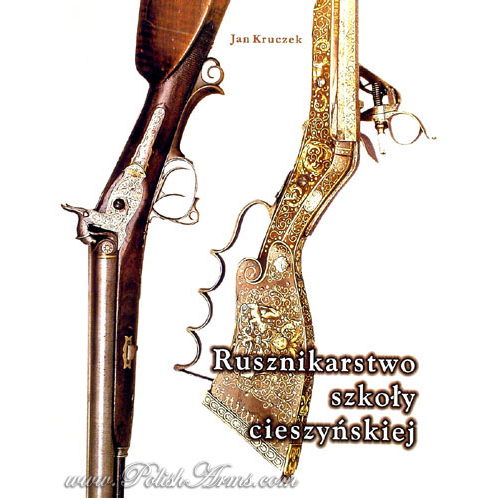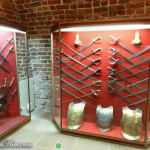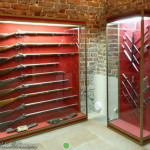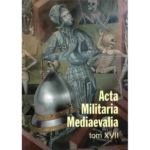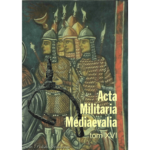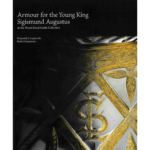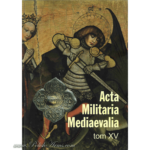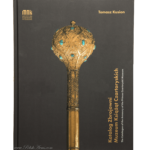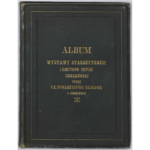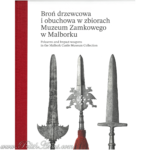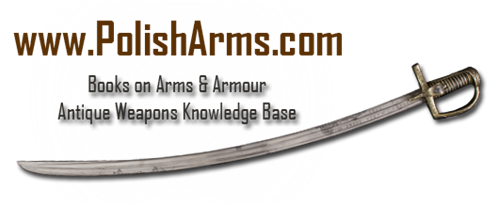
Gallery – Virtual Museum – Pszczyna Castle
 Another Polish museum has decided to show its exhibitions to a wider public on the internet. Let’s take a look at the beauty of Pszczyna Castle in the south of Poland, just over a dozen kilometers from the infamous Oświęcim and its Auschwitz camp.Pszczyna – the name of the small city – must be a real nightmare to pronounce. To make it easier and to hear the proper sound of the word, you can use a ‘text to speech’ synthesizer, choosing Polish language here. Pszczyna changed its owner several times throughout history. Today’s castle used to be a Gothic fortification back in the Middle Ages, but was reconstructed into a Renaissance residence in the 16th century. This was just the first of the major changes. The biggest changes were made during the time of the Dukes of Anhalt-Köthen-Pless in the 18th and 19th centuries, who expanded the estate and founded a park around it.
Another Polish museum has decided to show its exhibitions to a wider public on the internet. Let’s take a look at the beauty of Pszczyna Castle in the south of Poland, just over a dozen kilometers from the infamous Oświęcim and its Auschwitz camp.Pszczyna – the name of the small city – must be a real nightmare to pronounce. To make it easier and to hear the proper sound of the word, you can use a ‘text to speech’ synthesizer, choosing Polish language here. Pszczyna changed its owner several times throughout history. Today’s castle used to be a Gothic fortification back in the Middle Ages, but was reconstructed into a Renaissance residence in the 16th century. This was just the first of the major changes. The biggest changes were made during the time of the Dukes of Anhalt-Köthen-Pless in the 18th and 19th centuries, who expanded the estate and founded a park around it.
The present shape of the castle and its surroundings was executed by the successor of the Dukes, Prince Hans Heinrich XI, Duke of Hochberg. One must know that Silesia, the land where Pszczyna lies, was under Prussian rule after the partition of Poland in 1795. Soon, this beautiful place became very popular as a hunting palace for German nobles, Dukes and even Emperors.Between 1870 and 1876 the residence was rebuilt by the French architect Aleksander Hipolit Destailleur into the two-story palace-castle on a quadrangle plan in the style of 17th century French architecture.
As the official site of the Castle says:
Between 1914 and 1917 the Pszczyna castle played an important role housing an Emperor’s Headquarters and the General Staff of the German Army. It was here, in Pszczyna, where the Emperor, the Chief of General Staff, Marshal Paul von Hindenburg, and the Chief of Eastern Staff, General Erich von Ludendorff, were making military decisions that changed the history of Europe.
In 1922 Pszczyna was incorporated into the Polish state and remains within its borders to this day. Thankfully it survived World War II almost intact, even after the takeover by the Red Army, serving as a military hospital. It was in such good shape that it could be reopened as a museum in 1946.The castle in Pszczyna is one of the very few museums of this type in this part of Europe with so many elements of preserved historical furnishings. In 1995 the museum was rewarded with an honourable diploma for the concept of interior renovation by the organization Europa Nostra with its seat in The Hague, the pan-European federation for cultural heritage: “For diligent reconstruction of the castle interiors with their furnishings based on thorough historical research which brought back the splendour of the beginning of the twentieth century”. THE COLLECTIONT he collection of the castle shows mostly the everyday life of a 19th century noble family. You can find original furniture and everyday objects, as well as many hunting trophies.The other part of the collection, which interested us most, is the armoury, consisting mostly of objects gathered by the late owners of the castle. The armoury is located in the basement of the castle in several rooms. It isn’t a large collection, but it seems to be interesting, covering European and Eastern arms from the 16th to 20th centuries. Most of them are firearms including the famous “Tschinke” rifles from the 17th century, characteristic for their thin stock and beautiful decoration encrusted in bone and mother of pearl. One can even find a few examples of Persian and Japanese arms!
he collection of the castle shows mostly the everyday life of a 19th century noble family. You can find original furniture and everyday objects, as well as many hunting trophies.The other part of the collection, which interested us most, is the armoury, consisting mostly of objects gathered by the late owners of the castle. The armoury is located in the basement of the castle in several rooms. It isn’t a large collection, but it seems to be interesting, covering European and Eastern arms from the 16th to 20th centuries. Most of them are firearms including the famous “Tschinke” rifles from the 17th century, characteristic for their thin stock and beautiful decoration encrusted in bone and mother of pearl. One can even find a few examples of Persian and Japanese arms!
Despite the small collection, Pszczyna is an important place on the Polish map of antique arms. The curator of the castle, Mr. Jan Kruczek, is one of the finest experts on arms, especially firearms. His work on Tschinke rifles printed in 2001 is, and will be for many years, the most significant work on the subject! He is also the author of several other catalogues:
VIRTUAL GALLERYFrom a technical point of view, the castle’s virtual tour is far better than the previously presented tour from the Warsaw Army Museum. The engine is much more predictable; you just hold your left mouse button to look around freely, and use the scroll wheel or Ctrl for zooming. Unfortunately the quality of the pictures leaves much room for improvement. They are probably reduced to increase the speed of the site, which makes all the details of the arms indistinct. Also, one can have some trouble seeing some of the glass cases clearly; it would have been better if the camera operator could have gotten closer and photographed some of them from the far side.To get directly to the armoury you need to use the map in the upper corner of the window. There you can switch between the floors and other parts of the exhibition and tour, which we won’t concern ourselves with at the moment.
Movement between the rooms is also possible thanks to the arrows.In the rooms one cannot find too much information, which is unfortunate, as one would like to gain more knowledge about the gathered exhibits. There is only general information regarding each visited room and only a few objects you can click on to see an enlargement.The menu is simple: hide icons, help, zoom in and out, rotate, full screen.The tour is available HERE. For those with low bandwidth or those who cannot see it due to browser compatibility, I made a few screenshots from the site. Enjoy!
GALLERY
